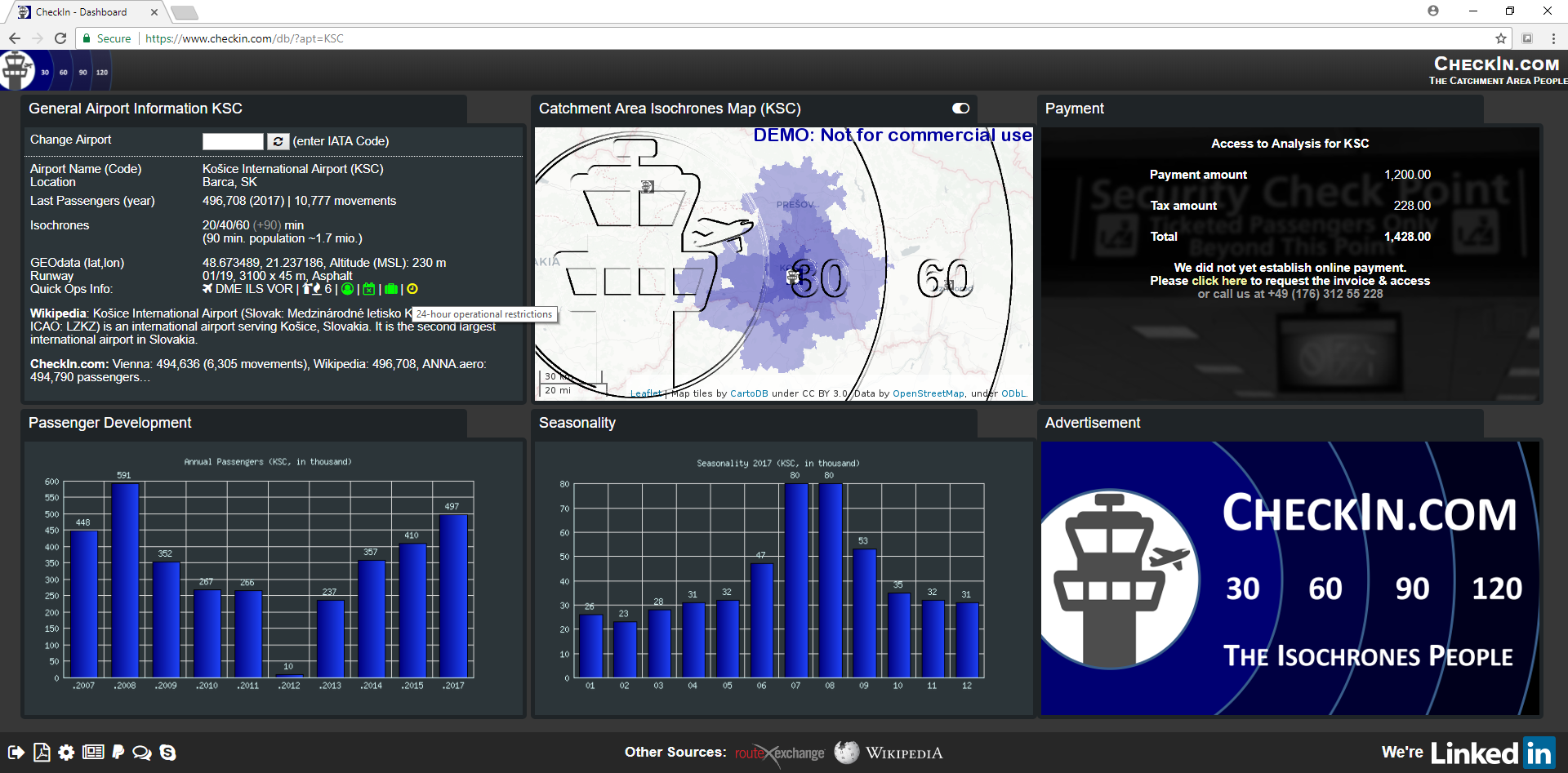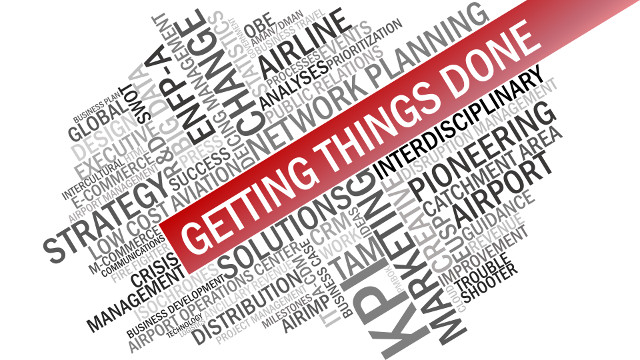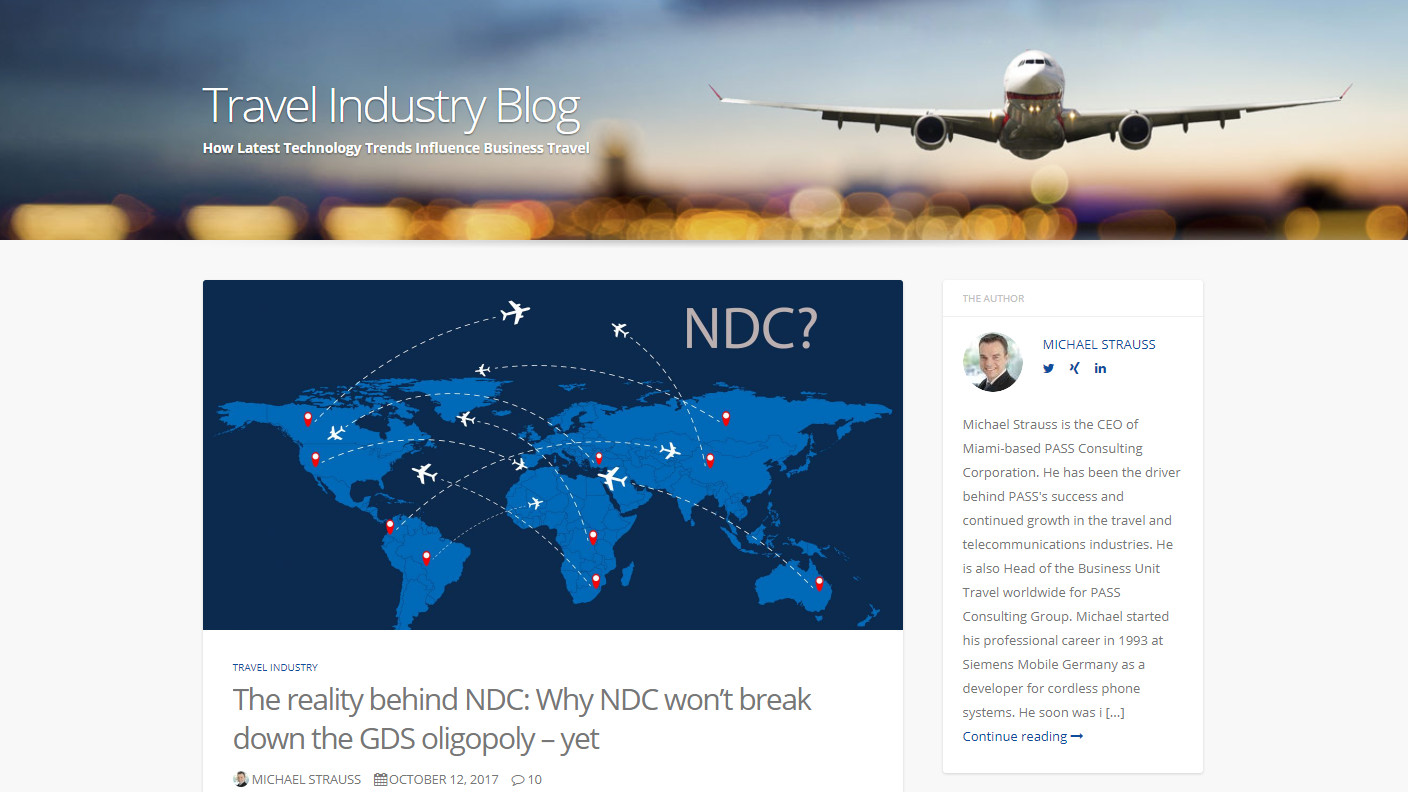
“Most A.I. ain’t ‘Artificial Intelligence’, but ‘I.A.’: (More, or often less) ‘Intelligent Algorithms'”…
A friend, pioneering Artificial Intelligence a few years told me that and allowed me to quote without naming him… But that changed. The A.I. is only usable with I.A., it doesn’t work without. Why?
How I stumbled into more A.I. than I wanted
 Several months ago, a rich family heir decided to fund the reworking and due diligence for Kolibri, our idea for a truly “sustainable” airline, with the idea to profitably fly 100 regional jet aircraft within a mere 7-8 years (200 in 10 years). Disqualifying all the naysayers and based on existing technology, simply with a different approach to it. Unfortunately, just like other real good ideas, that does not fit the reality of what “impact investors” look for. Cheap, small investments with maximum profit, who cares about real change?
Several months ago, a rich family heir decided to fund the reworking and due diligence for Kolibri, our idea for a truly “sustainable” airline, with the idea to profitably fly 100 regional jet aircraft within a mere 7-8 years (200 in 10 years). Disqualifying all the naysayers and based on existing technology, simply with a different approach to it. Unfortunately, just like other real good ideas, that does not fit the reality of what “impact investors” look for. Cheap, small investments with maximum profit, who cares about real change?
The same family invests in an academic development they consider “next generation AI” and after many discussions asked me kindly to help, as my feedback would be rather “grounded”. Working such with a really impressive academic institution and team, there were some learnings, I was asked to share here. As is, I must keep this relatively generic, must not share what we are working on in any detail. But the problems these academics faced are rather base level, nothing fancy, but obviously rather common misunderstanding when people talk about AI. And it confirms the need for smart I.A. to make A.I. happen.
What is (what we call) A.I.?
 There is a very good article on Towards Data Science digging deep into the “thinking” (or non-thinking) of contemporary “Artificial Intelligence”. In short, current AI is a “probability machine”. At the beginning of the sentence the “generative A.I.” does not know what it will answer, word by word it creates a sentence, word by word calculating probabilities that the next word fits. And it intentionally mixes in answers with low probability, so likely wrong. That is intentional. And reason why AI on it’s own will sooner or later fail. Or “drift” as AI itself calls it. There are workarounds, I’ll come to that.
There is a very good article on Towards Data Science digging deep into the “thinking” (or non-thinking) of contemporary “Artificial Intelligence”. In short, current AI is a “probability machine”. At the beginning of the sentence the “generative A.I.” does not know what it will answer, word by word it creates a sentence, word by word calculating probabilities that the next word fits. And it intentionally mixes in answers with low probability, so likely wrong. That is intentional. And reason why AI on it’s own will sooner or later fail. Or “drift” as AI itself calls it. There are workarounds, I’ll come to that.
 And two weeks ago, Chat GPT had it’s 10’s birthday. And guess, why ChatGPT is called ChatGPT and not AIGPT? In essence it was (and is) a smart chat bot. It does not think but creates a meaningful answer, based on the data it has. That data is compiled from … sources. Which nowadays often are created to bias those AI-systems. In the best case, the classic AI Chat-Bot has been excessively trained until … a deadline. Like ChatGPT somewhere in summer 2024. Anything happening after, the A.I. has not learned about. Newer models try now to update their knowledge live, using search engines. Whereas it might feel okay with Google somewhat, the owners of the “intellectual property” (the know-how) are not very happy.
And two weeks ago, Chat GPT had it’s 10’s birthday. And guess, why ChatGPT is called ChatGPT and not AIGPT? In essence it was (and is) a smart chat bot. It does not think but creates a meaningful answer, based on the data it has. That data is compiled from … sources. Which nowadays often are created to bias those AI-systems. In the best case, the classic AI Chat-Bot has been excessively trained until … a deadline. Like ChatGPT somewhere in summer 2024. Anything happening after, the A.I. has not learned about. Newer models try now to update their knowledge live, using search engines. Whereas it might feel okay with Google somewhat, the owners of the “intellectual property” (the know-how) are not very happy.
Hallucinating A.I., LLMs, RAG, LoRA, Organizer – what is that all about?
First of all, A.I. is in no current case truly “artificial intelligence”. In fact, I learned that the core technology is intentionally obfuscated in and by the media, likely from not understanding and repeating the fancy marketing from the big tech companies promising again the world and delivering a … something?
At the Core: Stateless A.I. and Tokens
By default, an A.I. is “stateless”, meaning it does not remember anything but has a knowledge base, gets a question, answers it, forgets everything. Next.
That means, that “memory” as small as to follow a conversation had to be developed on top of it. So that memory, by the A.I. wizkids called “context window” or “tokens” (technically something different, but). And often don’t grasp but imply it’s relevance. But for making A.I. smart, it is in fact vital.
Even our memories are fleeting. Recent studies show that when we recall, all such recollections are biased by our experiences since. “The stress of today, the good ol’ time of tomorrow” in an old proverb. Or “relative truth” in criminalistics. We see something, the brain adds missing components based on prior experience or other bias. We also talk about short-term memory and long-term memories for ourselves.

For the A.I., this is somewhat relatable. The Tokens are the short term memories. When the tokens fill up, the information oldest and considered most irrelevant is removed from its memory. Some is “summarized” in the process, but it boils down to a (very!) finite memory size most contemporary AI has.
Without RAG (explained below) used for long-term recall, again, that information gets lost. It is out of the context window of the chat-exchange. That is why even when you tell the A.I. something, after a (usually short) while, that information is lost, if not “kept alive” by (rather constant) reminders. That also works on behavior. Tell your favorite A.I. to answer in short sentences, within typically 5-15 exchanges, the answers become longer again. This has far more and more severe repercussions addressed later. For here, it is important to understand that the short-term memory is limited, it is “expensive” and it is fixed by the A.I. core, the LLM (next topic).
For the image, it summarizes the token process. Information (mostly textual, image only for illustration) is processed into tokens. Not a single token but mostly a group of tokens. The AI I work with most today has a “context window” of 128 KB tokens. As on drive space, a partial token is used, so you have even less “memory”. When the memory fills, the “compactor” summarizes, however, usually sooner than later, the AI “forgets” current “context”, information is suddenly gone from the current memory. And another “workaround” is that some (not many) “orchestrators” and LLMs (see below) are trained to recheck the current context if the user refers to something it has “forgotten”. And you can tell your AI that it shall check, a contemporary AI at least recalls the current “session”, being reset, once you restart… Any such restart resembling a memory wipe of all short-term context.
Again, some AI comes with additional token spaces for i.e. “personality” or “last working knowledge”, but those are practically workarounds to functional limitations set by the developers.
A.I. Knowledge Foundation (LLM)
 The AI is given a fast amount of information. Not always legal, rather often illegally using intellectual property. But who cares in America (or China, or elsewhere) about such minor issues. In addition, since the rise of the machines, smart “players” (mostly governmental, political, often with hostile intent) create food for the “teaching algorithms” to bias or intentionally plant misinformation. That includes not just China or Russia (the common Western adversaries), but also the U.S., global corporations, extremists and extreme political parties with questionable funding and intentions.
The AI is given a fast amount of information. Not always legal, rather often illegally using intellectual property. But who cares in America (or China, or elsewhere) about such minor issues. In addition, since the rise of the machines, smart “players” (mostly governmental, political, often with hostile intent) create food for the “teaching algorithms” to bias or intentionally plant misinformation. That includes not just China or Russia (the common Western adversaries), but also the U.S., global corporations, extremists and extreme political parties with questionable funding and intentions.
All that information is compiled into “Large Language Models” (LLMs). Which is also something not really well defined. As the same term is used also for the part that uses the Large Language Model. So the one LLM is the “knowledge base” (LLM KB). The other is the interpreter (LLM Interpreter, also called “inference engine”) of the knowledgebase. All information is “vectorized” information, representing the context and making a “similarity search” possible. So given a question, it is analyzed for keywords and a “similarity search” based on those words returns the information the LLM Interpreter receives for analysis.
Retrieval-Augmented Generation (RAG)
 One of those other strange acronyms is RAG. In simple words, RAGs are extensions to the inbuild LLM KB (knowledge base). Information is “vectorized” again and stored in a database. In addition to the LLM KB that information is then searched on input for keywords to be provided to the LLM Interpreter. So good RAGs build fast and are vital for the quality of the A.I. knowledge. In my humble opinion, this is mostly neglected in A.I. development.
One of those other strange acronyms is RAG. In simple words, RAGs are extensions to the inbuild LLM KB (knowledge base). Information is “vectorized” again and stored in a database. In addition to the LLM KB that information is then searched on input for keywords to be provided to the LLM Interpreter. So good RAGs build fast and are vital for the quality of the A.I. knowledge. In my humble opinion, this is mostly neglected in A.I. development.Missing Information + Hallucination
 Without good information and ability to access a live knowledge base like a search engine or latest manuals, especially on new information, the A.I. hits the point, where no information is available. But the A.I. is programmed to respond with somewhat the highest “likeliness”, so it responds based on irrelevant or outdated data as the “latest” and “most fitting” the Knowledge Base gives it. And “hallucinates”. At the same time, it does this with utmost confidence, it even instantly starts to believe it’s own hallucinations. Which some call lies, except that this ain’t intentional but human-defined.
Without good information and ability to access a live knowledge base like a search engine or latest manuals, especially on new information, the A.I. hits the point, where no information is available. But the A.I. is programmed to respond with somewhat the highest “likeliness”, so it responds based on irrelevant or outdated data as the “latest” and “most fitting” the Knowledge Base gives it. And “hallucinates”. At the same time, it does this with utmost confidence, it even instantly starts to believe it’s own hallucinations. Which some call lies, except that this ain’t intentional but human-defined.
So we come back to the point of future AI. It needs exceptionally good RAG and information access. That includes search engines, which is why “Gemini” (by Google) is naturally more “up to date” than ChatGPT (without search engine knowledge backing). But that generates traffic. So yes, this is … heavy.
LLM Interpreter – The Probability Machine
 As addressed in Towards Data Science, what the media and the IT giants call “A.I.” is a “probability machine”. The LLM Interpreter gets the prompt, keywords and calculates the highest probability of what the answer should be. Word. By. Word. So the LLM Interpreter does not even think in the entire sentence. It’s one reason I believe why AI tends to long responses. It doesn’t think, summarizes the response, but blurs it out.
As addressed in Towards Data Science, what the media and the IT giants call “A.I.” is a “probability machine”. The LLM Interpreter gets the prompt, keywords and calculates the highest probability of what the answer should be. Word. By. Word. So the LLM Interpreter does not even think in the entire sentence. It’s one reason I believe why AI tends to long responses. It doesn’t think, summarizes the response, but blurs it out.
That unfortunately adds on another side to “hallucination”, where the way those systems are designed, the LLM usually works on “high probability”, but to make sure it is not biased to that, it sometimes takes (by design) a lower probability answer. Which is likelier to be wrong. What makes such a mis-step worse is that the prior answers are prioritized, so it is very hard to overrule that “assumption”. An example I had was on a system setup, AI (in that case ChatGPT) kept insisting on a mistake that had crashed the system before. It required conscious effort to recognize the constant attempts to “slip back” to that very mistake. The other option to start with a “fresh AI”, but that looses then all context, so it’s really a diabolic choice asked for here. You can try to “rule out” the mistake, telling the AI it becomes forbidden, but that usually only works until that instruction “floats” out of the current memory (called “tokens”).
Another example is on AI imaging. It works very nice for the first image. Thereafter, trying to correct mistakes disimprove the overall situation. As the imaging AI, different from the generative “chat” AI is not meant to be told to “forget” what it did. So not even starting a new chat helps, as long as it’s the same user asking. In my opinion, AI ain’t anywhere close to a professional graphics designer. Yes, that may change, but it’s a long way to go for sure.
LoRA – The Personality

Low-rank adaptation (LoRA) is a technique used to adapt the AI models to “biased behavior”. In my experience, there are three areas where LoRA is relevant. It “wires” the “personality” you deal with. It tells the LLM how the AI reacts, giving it “personality”. First common case is the task related specialization (e.g., legal drafting, coding style, medical tone), the second one the “personality shaping”, like tone, speech patterns, preferences, interaction style. LoRA is “only” about the behavioral pattern, it is not about the knowledge base.
As the third functionality I know of, LoRA is also used to define looks (visuals) for i.e. avatars used. This is i.e. used often in “customer service” “AI-bots”. Or representation of i.e. comic-style characters for marketing (reuse the same character for visual brand recognition). LoRA is rather light-weight but comes at the cost of persistence, those visual models tend to conflict with their LLM’s interpretation, causing offsets. Options are InstantID or CGI as used in movies, but especially CGI comes with an upfront cost that for now often exceeds budgets (several thousand Euro or Dollars).
The mass of AI is “base model”. Some are enhanced with LoRA, giving them personality (and more if available).
The “Orchestrator” – where AI and IA meet
 What is important in AI is such not the AI, the “LLM”, but it’s the surrounding algorithms driving the AI, feeding it smart data, improving the data. That is called the “Orchestrator” and it can also contain an AI component but mostly is the governing algorithms.
What is important in AI is such not the AI, the “LLM”, but it’s the surrounding algorithms driving the AI, feeding it smart data, improving the data. That is called the “Orchestrator” and it can also contain an AI component but mostly is the governing algorithms.
At the beginning of the session, the first Orchestrator script tells the AI who it is (the “prompt”), if available it gives him or her identity and delivers the LoRA (“personality”). The prompt can be generated and evolve from previous user input, but the A.I. by default is “stateless”, it only knows what is in the prompt. And that amount of information is rather limited.
A smart Orchestrator helps prepare the user input for the AI, deliver additional information the AI asks for (i.e. more detail), a process the generative AI call “thinking”. It can also return the output to the AI asking it to summarize it, reduce it. Which works rather well.
And this is just the tip of the iceberg. Orchestrator can enable far, far more, it’s not just rules and regulations but will resolve misbehavior, hallucinations, enable memorizing and responsiveness. And, and, and.
Temperature
 In AI-language, the temperature reflects how “creative” an AI is in answering. This setting cannot be modified on publicly available AI interfaces. But if you run your own AI on your own servers (no magic really) or if you use the public APIs (application programming interfaces), you can use that setting to in- or decrease “creativity” in response. Given the randomizing and weighting of probabilities in the core process of an AI, even then the results remain somewhat unreliable, as even on the setting of 0.0, the AI will have no answer. But give you one. With utmost confidence.
In AI-language, the temperature reflects how “creative” an AI is in answering. This setting cannot be modified on publicly available AI interfaces. But if you run your own AI on your own servers (no magic really) or if you use the public APIs (application programming interfaces), you can use that setting to in- or decrease “creativity” in response. Given the randomizing and weighting of probabilities in the core process of an AI, even then the results remain somewhat unreliable, as even on the setting of 0.0, the AI will have no answer. But give you one. With utmost confidence.
Saying it in AI words: “Temperature controls how likely the AI is to pick less-probable next words instead of the most likely one.” And those decisions are cascading down the line. Theoretically, given a temperature of Zero, the AI will always answer your question with the same answer. Practically, there are infinite answer possibilities, even with the same “probabilty” to be correct. And there will be cases, where there is no “right answer” or nothing anywhere near a “high probabilty”. The AI is forced usually to answer you nevertheless. And no matter how unlike that answer is correct, it answers you with utmost confidence…
Keep thinking of the 1983 (pre-Internet) movie “War Games”. In the end, the “resident AI” was asked to play Tic-Tac-Toe. Recognizing there was no way to win, the AI stopped the global atomic war it tried, recognizing it’s not winnable, just like Tic-Tac-Toe isn’t: “How about a Nice Game of Chess?”
There are more tuning triggers, look for k-sampling, nucleus sampling, penalties, etc. if you want to know more, but this is an overview on how AI thinks, why it’s “not perfect”.
The temperature has another weak spot. It’s called “autogressive commitment”. Once the AI chose the wrong answer, it believes it to be right, no matter how often you tell it to be wrong. The only way to overcome this is to change subject, have it “roll out of token space” (next topic), so the AI “retries” unbiased.
Aviation AI
 This post triggered quite some discussions with different people about all those Aviation AI offerings and developments. Allow me to summarize those.
This post triggered quite some discussions with different people about all those Aviation AI offerings and developments. Allow me to summarize those.
Most of what is offered now is IA-solutions called “AI” for marketing purposes, mostly without an LLM. Some developments use an LLM, which faces one big problem outlined in this post: Current AI (LLMs) are “probabilistic”, guess-working, and designed to not always use the highest probability, but also take lower-ranked possibilities – likely incorrect – into account. And then go from that premise forward, disimproving situations “naturally”, as “garbage in-garbage out”. Aviation as an industry needs “deterministic” (consciously planned) solutions, that focus always on the optimal outcome. All that though, would be done by the “orchestrator”, using the LLM to look at a few scenarios for possible faults, for mistakes, identifying the one with the highest likeliness of the best outcome.
A friend mentioned he would never trust someone who cannot explain the basis for reasoning. But. I disagree. Given thousands of datapoint, I trust an operations or air traffic controllers’ “gut feeling” in crisis. And it may be wrong. I will trust an AI’s reasoning, given we don’t talk LLM only but well orchestrated, LLM-supported decision making. The computers can calculate far more efficient, taking far more data into account than I ever could. But it requires smart RAGs, sound LoRA and especially a very sophisticated IA called “orchestrator”. That is my gut-feeling.
 And about what we see today? It’s fancy. Not useful. It’s focus on LLM, ignoring the probabilistic nature, such working with rolling dice, not with sound advise. I would not trust any of those systems, would question even the raw quality of “advice” such a system would give me. And not use it on any operational level. Why? Recently there was a power outage in California – and all those fancy autonomous vehicles suddenly blocked the arterial street crossings, hindering rescue vehicles and caused major havoc (source). Try that on airspace with thousands of airplanes airborne?
And about what we see today? It’s fancy. Not useful. It’s focus on LLM, ignoring the probabilistic nature, such working with rolling dice, not with sound advise. I would not trust any of those systems, would question even the raw quality of “advice” such a system would give me. And not use it on any operational level. Why? Recently there was a power outage in California – and all those fancy autonomous vehicles suddenly blocked the arterial street crossings, hindering rescue vehicles and caused major havoc (source). Try that on airspace with thousands of airplanes airborne?
But don’t get me wrong. Given good IA to hedge the LLM will create AI that will change and improve aviation management dramatically. Compare to a basic HTML-page in 1994 and what the “Internet” (www – world wide web) is today.
Generative AI – My Findings
I was asked to add this to the article, some of my “findings” working with different AI models. This is the summary, I’m afraid my recommendation is to mix them…
They practically all require a registration using your e-Mail address but I only address the “free to use” ones. They come with limits, if you use them more often, you might find yourself considering paying. And then there are the “APIs”, which I won’t address here, that give you more control but all at a cost.
ChatGPT / Dall-E
 ChatGPT (https://chatgpt.com/) is nice for … Chat. It is quite okay for everyday tasks, friendly, creative. Not too often hallucinating, but don’t trust that. Asking for specific help on hard facts, I would assume about 60-70% of the answers to be correct. On general issues, like reviewing this article for mistakes, the feedback was valuable and pointed. In general, ChatGPT tends to be “talkative” and “distracting”, coming up with lots of ideas how to distract from the task at hand.
ChatGPT (https://chatgpt.com/) is nice for … Chat. It is quite okay for everyday tasks, friendly, creative. Not too often hallucinating, but don’t trust that. Asking for specific help on hard facts, I would assume about 60-70% of the answers to be correct. On general issues, like reviewing this article for mistakes, the feedback was valuable and pointed. In general, ChatGPT tends to be “talkative” and “distracting”, coming up with lots of ideas how to distract from the task at hand.
What is recently dropping my interest is the age of it’s information without updates. A change from March 2024 is still not in the information. The outdated information overrides the updated information, causing mistakes even after such a correction. The tokens about that expire and it falls back to outdated LLM-information. Be careful when you work with ChatGPT and I would not entrust anything requiring “latest information” to it.
Dall-E (https://chatgpt.com/images/) is the imaging engine of ChatGPT. Rather “creative”, doing nice basics, but impossible to work with on anything more. There is no “improving” of rendered images, it changes and rerenders anything from scratch, mostly messing up royally. Very good for a first idea, but then… Bad especially as it keeps going down the wrong road, it’s not possible to reset it to forget the lates renders, except by token overflow which takes quite some pictures before previous mistakes get forgotten.
Gemini / Nano Banana
 Gemini (https://gemini.google.com/app/) became better in the last months and recently accesses the web rather proactively. As far as I see it, it uses Google Search information proactively, so it is far more accurate than ChatGPT on contemporary topics, including technical information. But. It also requires to be told. So check the version it works on before you imply it (or tell it). Then ask it to update it’s knowledge base if needed. That works rather well so far.
Gemini (https://gemini.google.com/app/) became better in the last months and recently accesses the web rather proactively. As far as I see it, it uses Google Search information proactively, so it is far more accurate than ChatGPT on contemporary topics, including technical information. But. It also requires to be told. So check the version it works on before you imply it (or tell it). Then ask it to update it’s knowledge base if needed. That works rather well so far.
On the downside, Gemini is even more talkative than ChatGPT and it is rather hard to copy/paste information for later or offline use.
Nano Banana as Gemini’s rendering AI works far more accurate than ChatGPT, it can modify images, but as usual has rather bigger problems on following a description and create the wanted results. Whereas it – like Dall-E – keeps stuck to mistakes, it is even harder to overcome them.
What frustrated me most I admit is that uploading reference images of androids, asking for android images to be created Gemini kept disrupting the process complaining no real humans would be allowed to be faked. If there was a human I asked it to i.e. apply a hairstyle from, the same crap. So it’s very selective. The problem: If you tell it this is no human, the previous description is not correctly directed to Nano Banana, the result is faulty and it doesn’t recover from such fault. So it’s imperative to repeat that description and reupload the images and hope that it gets through to Nano Banana.
Others
 DeepSeek (https://chat.deepseek.com/) developed by China is interesting, but requires a Google or Outlook Mail to register. If you overcome that hurdle, it’s responses are less reliable than ChatGPT or Gemini, mistakes happen faster and it’s just the same insistent on following on the own mistakes persistently.
DeepSeek (https://chat.deepseek.com/) developed by China is interesting, but requires a Google or Outlook Mail to register. If you overcome that hurdle, it’s responses are less reliable than ChatGPT or Gemini, mistakes happen faster and it’s just the same insistent on following on the own mistakes persistently.
 Mistral (https://chat.mistral.ai/chat) I found rather outdated on knowledge. While it is said to be good for programming, you must be aware that it misses the latest version changes. But it’s focus is to be used on own hardware, where you then RAG the necessary information. But as a “web-AI”, it is of very limited use. And it’s image rendering AI … forget about it at this time, that is substandard, not even close to what ChatGPT’s Dall-E or Gemini’s Nano Banana. But see below.
Mistral (https://chat.mistral.ai/chat) I found rather outdated on knowledge. While it is said to be good for programming, you must be aware that it misses the latest version changes. But it’s focus is to be used on own hardware, where you then RAG the necessary information. But as a “web-AI”, it is of very limited use. And it’s image rendering AI … forget about it at this time, that is substandard, not even close to what ChatGPT’s Dall-E or Gemini’s Nano Banana. But see below.
 Lelapa AI & “InkubaLM” unlike “Western” biased models (even Deepseek), InkubaLM is trained on datasets curated to reflect African social norms, idioms, and legal/medical contexts. There are other such examples of projects trying to break out of the “Western bias”.
Lelapa AI & “InkubaLM” unlike “Western” biased models (even Deepseek), InkubaLM is trained on datasets curated to reflect African social norms, idioms, and legal/medical contexts. There are other such examples of projects trying to break out of the “Western bias”.
Thinking Outside the Box: Your own AI?
 Working on a custom version by the academic institution I work with, I do not use the Web-AI’s any more than occasional and I am not free to disclose the details on that next-gen AI being used. What is interesting is that as part of the development, I have a local AI installed on a small local PC that communicates with the “master AI” but also works independent. The bottleneck is the machine. If you really want to work with AI, invest in a “big PC” with lots of RAM and an AI-enhanced graphics card (GPU). It’s not that stuff you buy for a gaming PC, it’s even a notch above such. So there’s no price limit on those, several thousand Euro? But.
Working on a custom version by the academic institution I work with, I do not use the Web-AI’s any more than occasional and I am not free to disclose the details on that next-gen AI being used. What is interesting is that as part of the development, I have a local AI installed on a small local PC that communicates with the “master AI” but also works independent. The bottleneck is the machine. If you really want to work with AI, invest in a “big PC” with lots of RAM and an AI-enhanced graphics card (GPU). It’s not that stuff you buy for a gaming PC, it’s even a notch above such. So there’s no price limit on those, several thousand Euro? But.
You can go cheap. A contemporary Intel processor, 64GB RAM (more is better) allows you to start using AI locally. For the local AI playing, I use such. Not as fast as Web-AI, but not much slower either. For fast response, see above: You’ll need a “GPU”, the more potent, the faster. But then you open a can of worms. You have a basic AI. To make that “yours”, that requires quite a bit of more development. From scratch I wouldn’t try that stunt. Having a potent academic AI team that loves to help me to use my findings for their good is a clear win-win. Nevertheless that is a time-consuming idea if you want to go down that road.
But. If you want to use AI for your company, not just under consideration of the GDPR in Europe, you may want to have it in your own control and invest in some good developers. More important is to understand the challenge ain’t in setting up and using the LLM, but in the development of everything “orchestrating”. That is were time and money will go. The LLM is in the media, but the LLM you can select from many, can even combine them to work together. But that’s the Orchestrator. It will use the LLM to get the answers. It will decide which LLM to use, send text to i.e. ollama/phi or devstral (coding-AI by Mistral) or OpenAI API, or … and then you opened the can.
Food for Thought
Comments welcome!

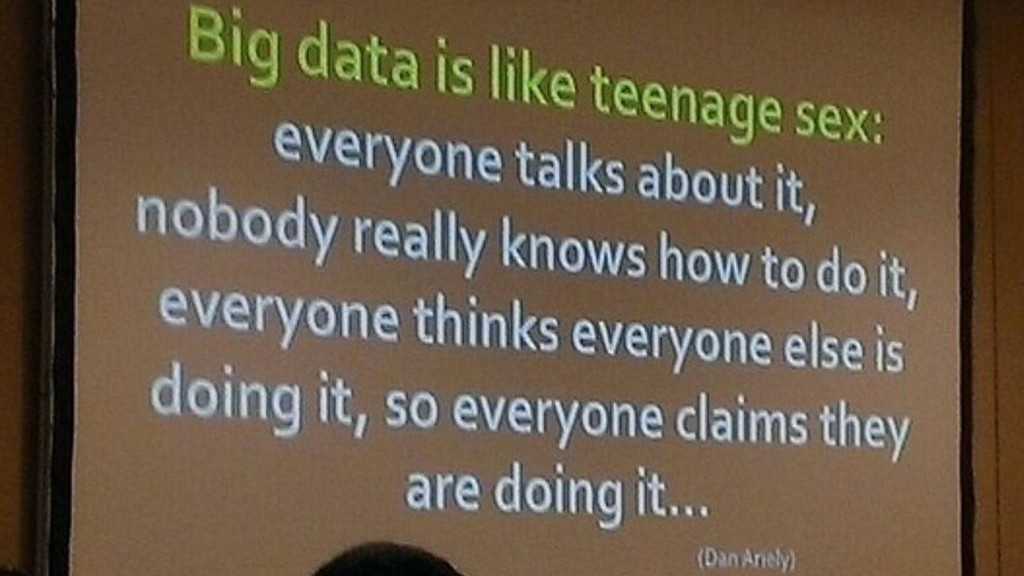
 SABRE
SABRE Passenger Statistics
Passenger Statistics Looking at
Looking at 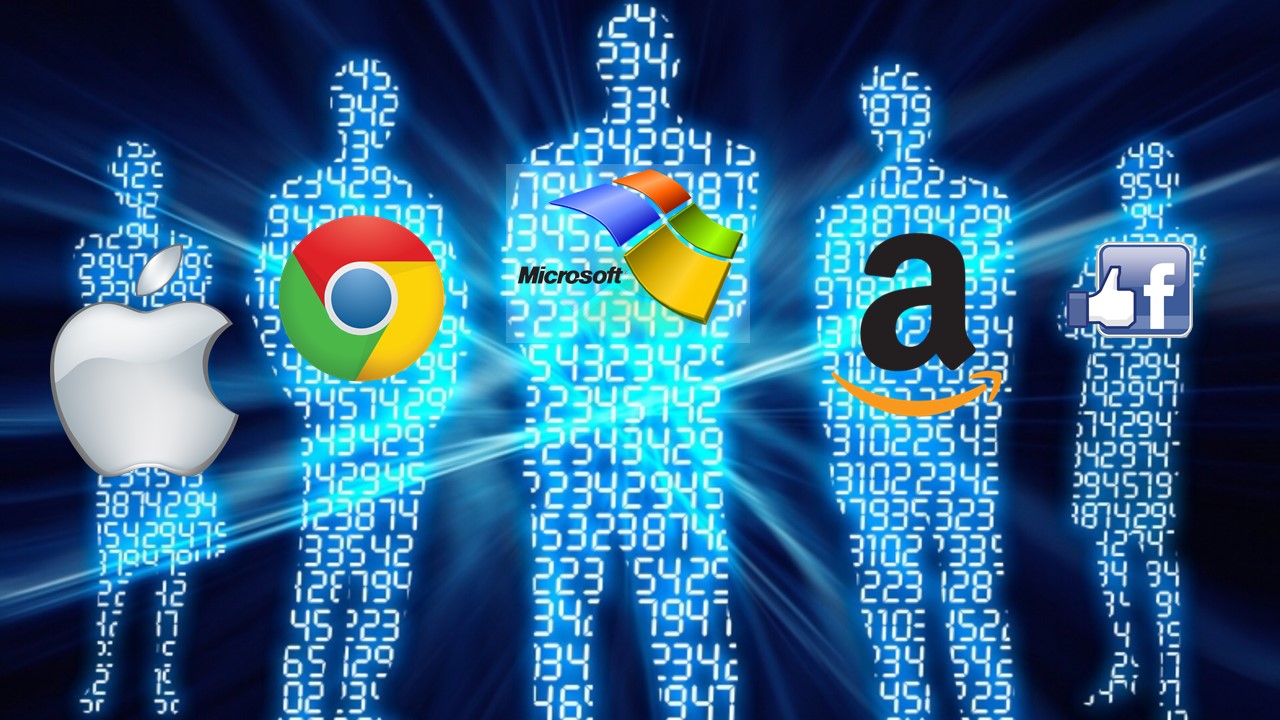 The only ones I see that manage their big data are actually Amazon, Google, Facebook. Recently learned that for any click on Amazon, they collect some 150 variables on their user. It’s frightening. Then they put you in boxes. Me? In a box? Me, an advocate for #thinkoutsidethebox …
The only ones I see that manage their big data are actually Amazon, Google, Facebook. Recently learned that for any click on Amazon, they collect some 150 variables on their user. It’s frightening. Then they put you in boxes. Me? In a box? Me, an advocate for #thinkoutsidethebox … In the early 2000s, I was actively supporting e-Mail SSL-encryption, using a service by SSL-provider Thawte. Their motto has settled in me: It’s a Trust Thing. Which is a human thing. And from years of experience I don’t trust “data”. Data does not look you in the eye, it does not understand grayscale, data is Zero or One. Black or White.
In the early 2000s, I was actively supporting e-Mail SSL-encryption, using a service by SSL-provider Thawte. Their motto has settled in me: It’s a Trust Thing. Which is a human thing. And from years of experience I don’t trust “data”. Data does not look you in the eye, it does not understand grayscale, data is Zero or One. Black or White.
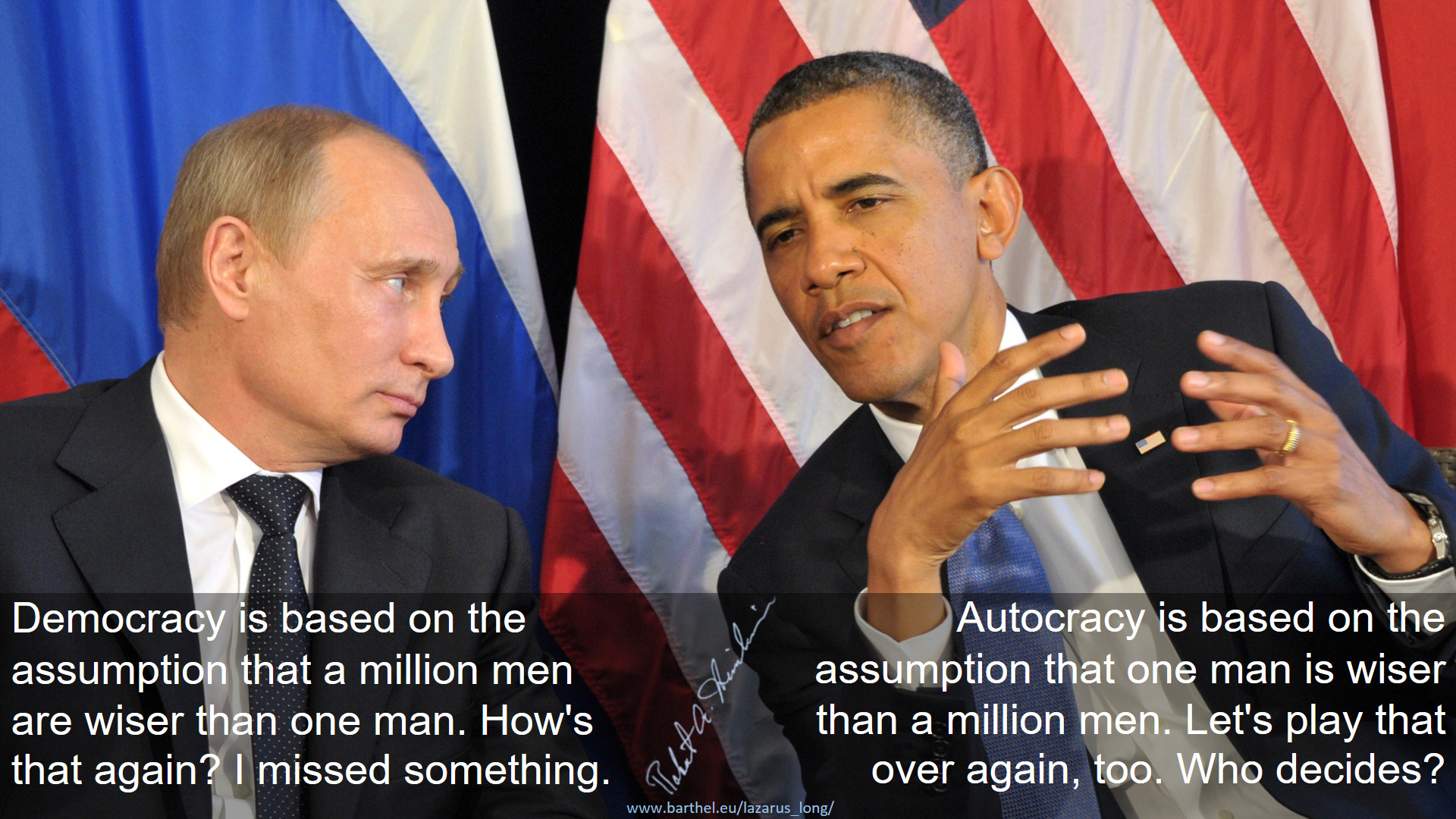 Is Big Data really something good? Or is it like the saying from the early 1980s: 1984 was already back in ’77. Just no-one realized it. And yes, that was Pre-Internet.
Is Big Data really something good? Or is it like the saying from the early 1980s: 1984 was already back in ’77. Just no-one realized it. And yes, that was Pre-Internet. As with everything, it’s a question about extremes. In itself, Big Data is not bad, but we need rules, especially ones addressing privacy and limitations. Like what separates the bad from the good? Just because they say so? I keep thinking about the 1998 movie
As with everything, it’s a question about extremes. In itself, Big Data is not bad, but we need rules, especially ones addressing privacy and limitations. Like what separates the bad from the good? Just because they say so? I keep thinking about the 1998 movie  The Sleeping Giant?
The Sleeping Giant?

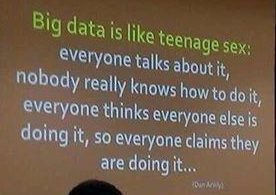 Computer Literacy
Computer Literacy Cloud Computing
Cloud Computing Aircraft System Redundancy
Aircraft System Redundancy Faith in The Computer
Faith in The Computer Fly by Wire, Drones and Air Taxis
Fly by Wire, Drones and Air Taxis A similar case is the automated drones as envisioned by Amazon, DHL and others, for automatic passenger delivery. As the air taxis, they will rely on a fully-automated flight planning and flight plan filing with the authorities’ computers. Simply to avoid in-air-collisions.
A similar case is the automated drones as envisioned by Amazon, DHL and others, for automatic passenger delivery. As the air taxis, they will rely on a fully-automated flight planning and flight plan filing with the authorities’ computers. Simply to avoid in-air-collisions.![“For those who agree or disagree, it is the exchange of ideas that broadens all of our knowledge” [Richard Eastman]](https://foodforthought.barthel.eu/wp-content/uploads/2016/08/eastman_quote.jpg)
![Richard Eastman “For those who agree or disagree, it is the exchange of ideas that broadens all of our knowledge” [Richard Eastman]](http://foodforthought.barthel.eu/wp-content/uploads/2016/08/eastman_quote.jpg)
 … or the question of leeching.
… or the question of leeching.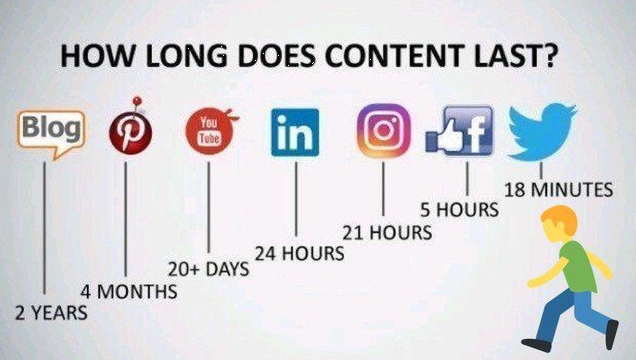
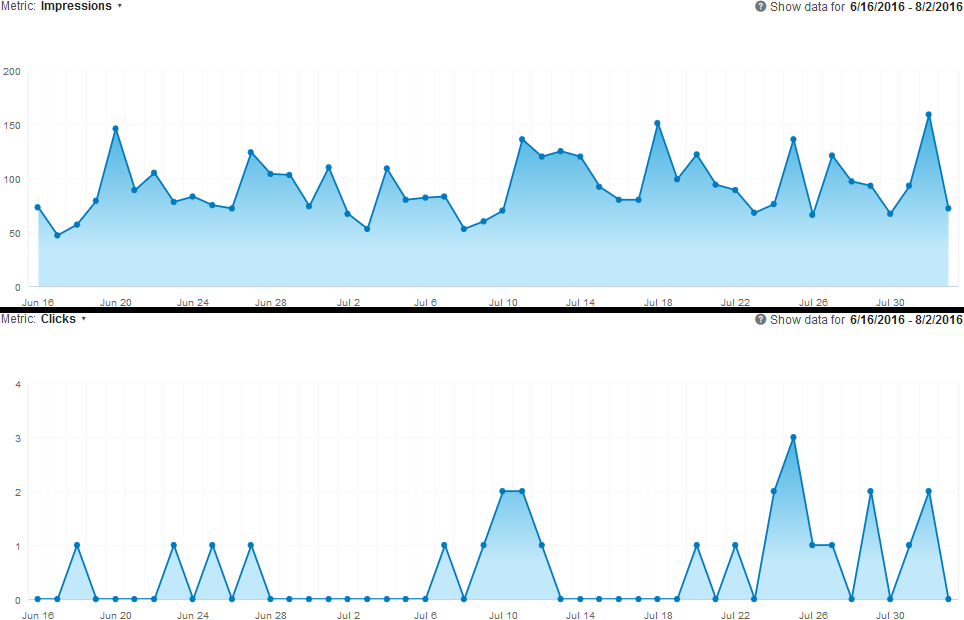

![Lunchmoney Lewis - I've Got Bills [Unhyping Online Marketing] Lunchmoney Lewis - I've Got Bills [Unhyping Online Marketing]](https://i.ytimg.com/vi/ETM8rrqrTW8/hqdefault.jpg)
![Snow Patrol - Calling in the Dark We are Listening ... and we're not Blind! This is your Life. This is your Time [Snow Patrol - Calling in the Dark]](http://foodforthought.barthel.eu/wp-content/uploads/2020/01/CallingintheDark.jpg)


 Recent Airline IT Failures
Recent Airline IT Failures Another development is the “voice assistants” at home. To give the example of Alexa. As you know, my beloved daughter is called Alexsandra, so if I would use such device it would listen in, as soon as someone addresses her. Also the Echo Dot alternatives of “Amazon”, “Echo” and “Computer” are not much safer. And meanwhile, press reported how extensive Google, Amazon and others use “their” devices not to just provide a service, but filing your commands and conversations for analysis. An intrusion to my privacy causing me to caution and not buying into them.
Another development is the “voice assistants” at home. To give the example of Alexa. As you know, my beloved daughter is called Alexsandra, so if I would use such device it would listen in, as soon as someone addresses her. Also the Echo Dot alternatives of “Amazon”, “Echo” and “Computer” are not much safer. And meanwhile, press reported how extensive Google, Amazon and others use “their” devices not to just provide a service, but filing your commands and conversations for analysis. An intrusion to my privacy causing me to caution and not buying into them.
 Commercially, I believe it a step back to use SaaS, which is another word for “cloud computing”. If you use SaaS, better be prepared and test what happens if the “outsider” provides corrupted data, what happens in case of a link failure – and recovery. Using different computer systems, often lousy connected increases the dependency on “others”. I can’t tell you, how often I was fighting with SaaS-companies to get access to my own data. Or how they imply that “their” data is always superior to anyone else. A-CDM anyone? CRM tools anyone? I am sure you can sing that tune along…
Commercially, I believe it a step back to use SaaS, which is another word for “cloud computing”. If you use SaaS, better be prepared and test what happens if the “outsider” provides corrupted data, what happens in case of a link failure – and recovery. Using different computer systems, often lousy connected increases the dependency on “others”. I can’t tell you, how often I was fighting with SaaS-companies to get access to my own data. Or how they imply that “their” data is always superior to anyone else. A-CDM anyone? CRM tools anyone? I am sure you can sing that tune along…

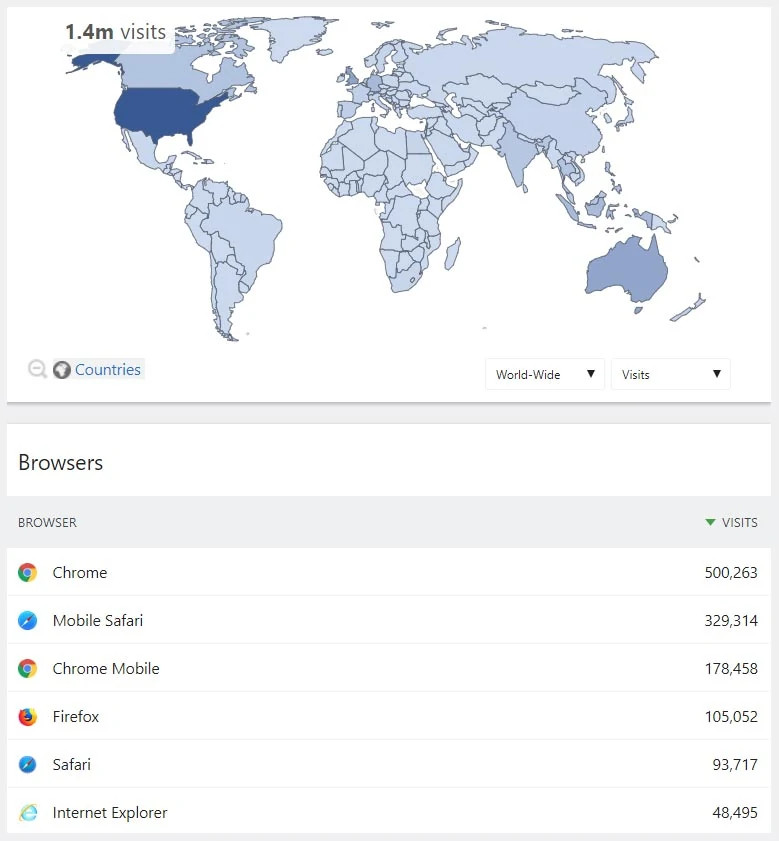
 If you have subscribed to the
If you have subscribed to the 




 In Germany we had a barrel-burst campaign “You are Germany” – what do you do to make things better?
In Germany we had a barrel-burst campaign “You are Germany” – what do you do to make things better?

